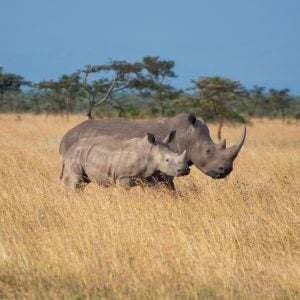
The commercial trade in wild animals is a multi-billion dollar business that threatens the survival of many species and results in the inhumane treatment of billions of animals every year. Humane Society International has long been involved in international efforts to reduce or halt the international trade in wildlife and to ensure that animals that are traded are treated in a humane manner.
What is wildlife trade?
Each year, billions of animals of all types are captured from the wild and sold in the wildlife trade. Commercial uses of wildlife can be divided into the trade in wildlife parts and products and the trade in live wildlife.
The trade in wildlife parts and products includes:
- exotic leathers and fur (elephant skin boots, kangaroo skin soccer balls, cat, fox and coyote fur coats, ostrich skin boots, bird feather apparel, snake and lizard skin shoes, crocodile and alligator shoes and purses, eel skin purses and shark skin shoes),
- ornamental objects (elephant ivory jewelry, sea turtle shell cases, snail shells, matted butterflies),
- food (monkey and ape bushmeat, turtle soup, frog legs, bear paws, fish, lobsters, crabs, shrimp, clams and oysters), and
- traditional medicine (tiger bones, rhinoceros horns, deer antlers, bear gall bladders).
The trade in live wildlife includes:
- the exotic pet trade (birds, reptiles, amphibians and fish),
- biomedical research and teaching (primates, reptiles, amphibians and fish),
- stocking of public or private game farms and hunting ranches (deer, antelope, rhino and wild sheep),
- zoos and safari parks (elephants, giraffes, rhinoceros, large cats, monkeys, birds, reptiles) and
- food (reptiles, amphibians and fish).
There are many wildlife-based industries seeking to attract ever-increasing numbers of human consumers. Modern transportation methods facilitate delivery of wildlife and wildlife products from all corners of the globe to consumer markets. Increasing wealth makes wildlife and wildlife products that were once off-limits to the majority of people because of their high cost affordable. The wealthiest nations on Earth are the largest consumers of wildlife.
What conservation problems are caused by the wildlife trade?
Sadly, as the international wildlife trade has increased and becomes more lucrative, cash-poor, wildlife-rich nations have been unable to control the trade of their wildlife. Forty percent of vertebrate animals that are endangered or threatened with extinction today were brought to that point, in part, by the uncontrollable wildlife trade. Rarely are enough funds available for poor countries to study wildlife populations and to control wildlife extraction and trade to ensure that it is not causing conservation harm to the species.
What are the humane problems caused by the trade?
The trade in wildlife is inherently inhumane. Methods used to capture and kill wild animals whose parts are destined for the trade, particularly when this is done on a large scale, as are many commercial operations, are grossly inhumane. Animals are often poisoned, trapped or snared, or bludgeoned to death. Their parts are often removed even before they are dead.
The trade in live wildlife results in the injury and deaths of a large percentage of those animals captured for the trade. The mortality rates of course vary depending on the type of animal, the country of origin, the capture and transport techniques used, and ultimately, the ability of the species to withstand extreme physical and psychological trauma and adapt to a captive environment.
What can be done?
First of all, consumers should consider the conservation and humane problems caused by the wildlife trade when making purchasing decisions. Furthermore, the capture, transport, killing and trade in wildlife should be regulated by local, national, and international law. Where laws do not exist to protect species from destructive exploitation or where enforcement is not possible, governments should halt capture and trade of wildlife. Wildlife trade should also be halted where cruel capture, transport, and killing techniques cannot be reformed, regulated and enforced by the government.
To maximize the potential to protect wildlife species, in 1992 HSI and other groups launched an international alliance of non-governmental organizations, the Species Survival Network (SSN), which is committed to the promotion, enhancement, and strict enforcement of the Convention on International Trade in Endangered Species of Wild Fauna and Flora (CITES). The SSN coordinates efforts to foster international wildlife protection through CITES.
